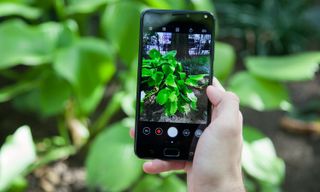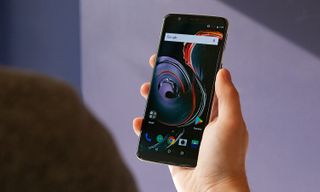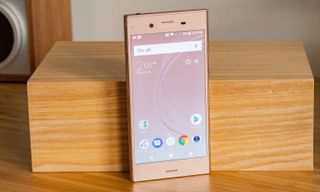When Is Your Phone Getting Android 8.0 Oreo?
Wondering when your phone will get Android 8.0 Oreo? We asked every major phone maker to find out.
Android 8.0 Oreo brings a host of notable improvements to Google’s mobile OS, from picture-in-picture multitasking to smarter notifications and speedier overall performance. But as is so often the case with major Android updates, not everyone has access to Oreo just yet.

As of March, the updated OS is still absent from the vast majority of new smartphones on the market today. Less than 1 percent of Android devices were running Oreo in January, by Google’s estimation. That compares to a quarter of Android devices running Nougat and nearly 30 percent running Marshmallow.
Some good news, though: that figures to change in 2018. To find out how quickly, we got answers from top Android phone makers to find out when you can expect to see Oreo arrive and which phones will get the update.
Update Mar. 20: Samsung has finally pushed out the 8.0 update for the Galaxy S8 and S8+ on T-Mobile, Sprint and Verizon, while Essential Phone owners are now receiving 8.1.
Asus
Asus has begun sending Oreo live for the ZenFone 4 series right before the new year. That includes the ZenFone 4, ZenFone 4 Max and ZenFone 4 Pro. The ZenFone AR and ZenFone 3 family are expected to follow suit as well, but we don’t yet know when Asus intends to make those updates available.
According to Asus, the ZenUI 4.0 interface packaged with Android 8.0 is much faster and lighter than the outgoing software, with the number of pre-installed apps cut from 35 to 13.
Asus phones with 8.0
Sign up to get the BEST of Tom’s Guide direct to your inbox.
Upgrade your life with a daily dose of the biggest tech news, lifestyle hacks and our curated analysis. Be the first to know about cutting-edge gadgets and the hottest deals.
- ZenFone 4 Pro
- ZenFone 4 Max
- ZenFone 4
Asus phones confirmed to get 8.0
- ZenFone AR
- ZenFone 3 Deluxe
- ZenFone 3 Ultra
- ZenFone 3 Laser
- ZenFone 3 Max
- ZenFone 3
Essential
Essential’s only phone, the PH-1, is now one of just a handful of Android phones to run version 8.1 of Oreo. The update was pushed out in March after Essential canceled its 8.0 release in February. It puts the startup in exclusive company alongside Google, Nokia and Huawei as one of the few smartphone makers to adopt 8.1 while most companies are still lagging behind in getting their products on 8.0.

Google’s phones are always the first to get new Android updates, so it should come as no surprise that the company’s last three generations of flagships – the Huawei Nexus 6P, Pixel, Pixel XL, Pixel 2 and Pixel 2 XL – have all received Oreo.
It’s been Google’s policy over the years to support its smartphones with new system updates for two years. Thankfully, that window is getting a bit longer, starting with the Pixel 2 and Pixel 2 XL. Going forward, Google will deliver new Android versions to its devices for three years after release. This means the Pixel 2 duo will eventually see Android R in 2020. Meanwhile, first-gen Pixel owners can expect one more major update in fall 2018, while Nexus 6P customers have reached the end of their phone’s supported lifespan.
Google phones with 8.0
- Pixel 2 XL
- Pixel 2
- Pixel XL
- Pixel
- Huawei Nexus 6P
HTC

HTC has beaten many of its competitors to the punch in terms of issuing Oreo updates, having already delivered Android 8.0 to the U11 and even the budget U11 Life back in the fall. The update is rolling out for the HTC 10 as we speak, and the U Ultra is expected to follow suit. It should be easy to tell as the updates arrive, as HTC conveniently keeps a support page on its site with links to all the most recent firmware on a model-by-model basis.
We reached out to HTC about an ETA for other outstanding devices, though the company told us it has nothing to announce at this time.
HTC phones with 8.0
- U11+
- U11
- U11 Life
- HTC 10
HTC phones confirmed to get 8.0
- U Ultra
Huawei and Honor

Huawei’s latest flagship, the Mate 10 Pro, includes Android Oreo alongside the newest version of the company’s EMUI interface. The same is true for the Honor View10, which is powered by the same Kirin 970 processor inside the Mate 10 Pro. However, the View10 goes a step further, in that it's launching with 8.1 in tow.
Huawei has confirmed to Tom’s Guide that a total of 12 Huawei and Honor devices will be updated to Oreo in the near future, with the rollout having reached the Mate 9 and P10 in January. The Mate 9 Pro and P10 Plus should also be a part of that group, as well as the Honor 7X, 6X and 8.
Huawei phones with 8.0
- Huawei Mate 10 Pro
- Huawei Mate 10
- Honor View10
Huawei phones confirmed to get 8.0
- Huawei Mate 9 Pro
- Huawei Mate 9
- Huawei P10 Plus
- Huawei P10
- Honor 8
- Honor 7X
- Honor 6X
LG

If you live in Asia, you can already start enjoying Oreo on LG’s most recent flagships, the V30 and G6. The V30’s 8.0 update publicly released in Korea in December, while reports of a beta for the G6 have recently surfaced out of China.
As for the company’s other phones, it’s anyone’s guess. Ordinarily, we’d say V20 and G5 users can expect to get the same treatment, but LG has remained tight-lipped on its older models. The G5 in particular didn’t sell very well, meaning it wouldn’t be completely surprising to see it get passed over.
LG is reportedly working on a new phone, the G7, which is expected to debut at Mobile World Congress in February. Given that timing, we’d be shocked if this rumored phone didn’t ship with Oreo pre-installed.
We’ve reached out to LG for more information, and will update this section when we hear back.
LG phones confirmed to get 8.0
- V30
- G6
Motorola

Motorola makes a lot of phones, mostly midrange and budget models. Typically those aren’t favorable conditions for updates, but the company has been one of the few Android partners to confirm a list of devices that will receive version 8.0. While many of its latest handsets are included, the low-end Moto E4 and E4 Plus evidently haven’t made the cut.
As for when users can expect Oreo updates, Motorola hasn’t said. None have released yet – save for the Android One edition of the Moto X4 – though we expect the range-topping Z2 Force and Z2 Play to lead the way. We’ve reached out to Motorola for an ETA.
Motorola phones with 8.0
- Moto X4 Android One
Motorola phones confirmed to get 8.0
- Moto Z2 Force
- Moto Z2 Play
- Moto Z
- Moto Z Play
- Moto Z Force (Droid Edition)
- Moto Z (Droid Edition)
- Moto X4
- Moto G5S Plus
- Moto G5 Plus
- Moto G5
- Moto G4 Plus
OnePlus

OnePlus has received flak in the past – rightfully so – for failing to come through on promises to update its products in a timely manner (or at all in the case of the OnePlus 2). Thankfully, it's been doing a solid job with Oreo. The OnePlus 3 and 3T received Android 8.0 alongside OxygenOS 5.0 beginning in November. However, reports of frequent app crashes, wonky network connectivity, and all around frustration forced the company to terminate the rollout for its newer phones.
OnePlus returned in the new year and published Oreo for the remaining two phones slated to get it. The OnePlus 5 received the public release on Jan. 9, followed by the OnePlus 5T on Jan. 31.
OnePlus phones with 8.0
- OnePlus 5T
- OnePlus 5
- OnePlus 3T
- OnePlus 3
Samsung

Samsung usually plays its cards close to its chest regarding Android updates, refusing to make any concrete announcements about when users can expect them. After a series of betas, version 8.0 has finally gone live for Galaxy S8 and S8+ devices purchased through Verizon, T-Mobile and Sprint. Unlocked handsets and AT&T-locked models are still awaiting the update, as are all models of the Galaxy Note 8. The firmware is being pushed out in waves, so if you don't see it yet, be patient.
As far as older phones are concerned, we expect flagships like the Galaxy S7 and S7 Edge, as well as the two-year-old Note 5 to also see Android 8.0, but betas for those devices haven't surfaced yet. The same goes for the company’s lower-cost Galaxy J, A, and C ranges. The just-released Galaxy S9 and S9+ launched with 8.0 onboard.
Samsung phones with 8.0
- Galaxy S9+
- Galaxy S9
- Galaxy S8+ (T-Mobile, Sprint, Verizon)
- Galaxy S8 (T-Mobile, Sprint, Verizon)
Samsung phones confirmed to get 8.0
- Galaxy Note 8
- Galaxy S8+ (AT&T, unlocked)
- Galaxy S8 (AT&T, unlocked)
Sony

Sony has been on a brilliant streak of keeping all its latest devices up-to-date. The company launched its flagships for 2017, the Xperia XZ1 and XZ1 Compact, with Oreo already onboard. Later in December, updates dropped for 2016’s Xperia XZ line, as well as the X Performance. Sony even makes it incredibly easy to follow its rollout process, with release notes for each model available on the company's website.
As of Feb. 5, the latest to see 8.0 are the Xperia X and Xperia X Compact. With that, Sony has finished distributing Oreo to its 2016 flagships, and the only devices on the list that remain are the XA1 series.
In the interest of transparency, Sony recently clarified its Android update policy to Xperia Blog. The policy states that owners of "premium range devices" can expect software updates for two years after launch, while the company reserves the decision not to update "midrange or entry-level" handsets if testing fails to meet its standards.
Sony phones with 8.0
- Xperia XZ1
- Xperia XZ1 Compact
- Xperia XZ Premium
- Xperia XZ
- Xperia XZs
- Xperia X Performance
- Xperia X
- Xperia X Compact
Sony phones confirmed to get 8.0
- Xperia XA1 Plus
- Xperia XA1 Ultra
- Xperia XA1
ZTE

ZTE may have recently discontinued the Axon 7, but the company is still committed to supporting its popular midrange handset with an update to Oreo. In December, a representative made a surprise announcement that the company is currently working on the update for the Axon 7. The beta program for the device kicked off Feb. 14, and interested owners are encouraged to register on ZTE's Z-Community site.
A post on the same forum discovered by XDA Developers in January indicated the Axon 7 Oreo update will introduce a revised user experience that ZTE is calling Stock+. Unlike the MiFavor UI previously featured on the Axon 7 (as well as ZTE's other products), Stock+ aims to be much closer to the form and function of vanilla Oreo, with a few added features thrown in. ZTE later confirmed this when it announced the beta program, calling the new interface "near-stock Android."
The Axon 7 will eventually be joined by ZTE’s dual screen Axon M flagship, which was confirmed to receive Oreo in the months following its November debut. We reached out to ZTE for clarification on its schedule, and here’s how the company responded:
"ZTE is very open to bringing Android O to all of our devices. As we evaluate hardware capabilities and carrier requirements it will drive how quickly we would be able to commit to whether we can, and the actual timelines of seeing this update on a device."
ZTE phones confirmed to get 8.0
- Axon M
- Axon 7
Credits: Tom's Guide
Adam Ismail is a staff writer at Jalopnik and previously worked on Tom's Guide covering smartphones, car tech and gaming. His love for all things mobile began with the original Motorola Droid; since then he’s owned a variety of Android and iOS-powered handsets, refusing to stay loyal to one platform. His work has also appeared on Digital Trends and GTPlanet. When he’s not fiddling with the latest devices, he’s at an indie pop show, recording a podcast or playing Sega Dreamcast.
